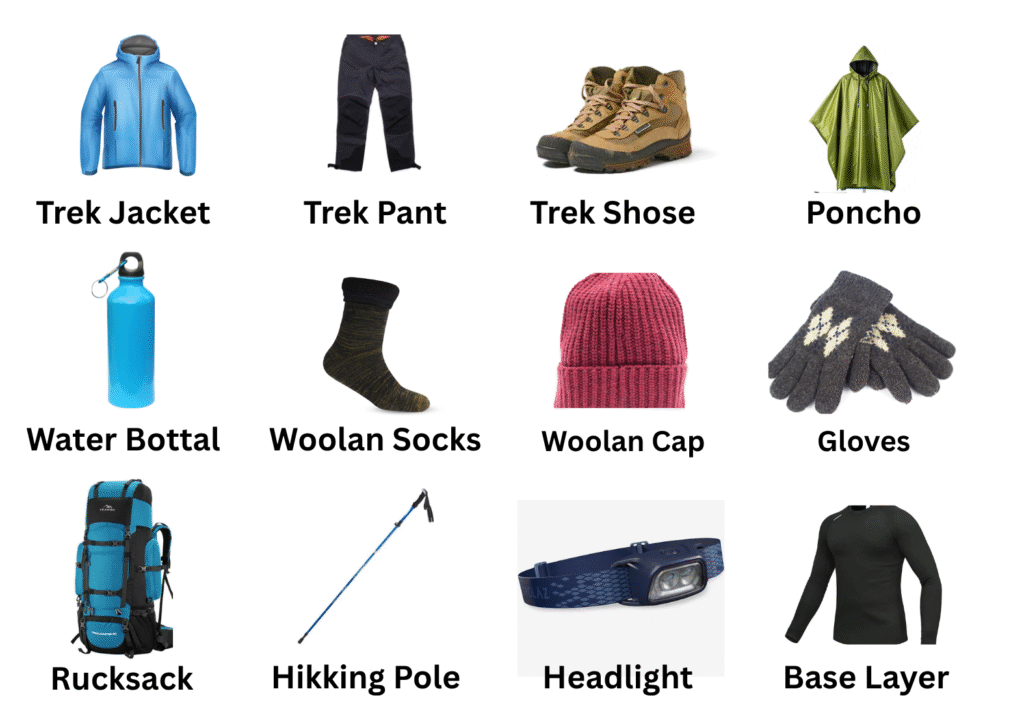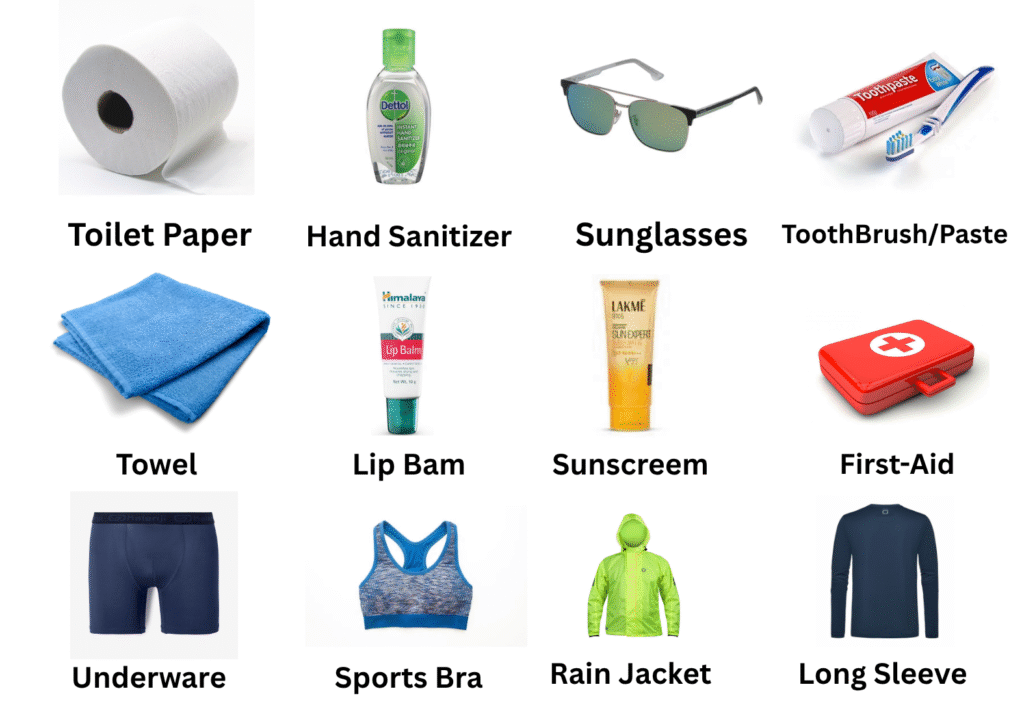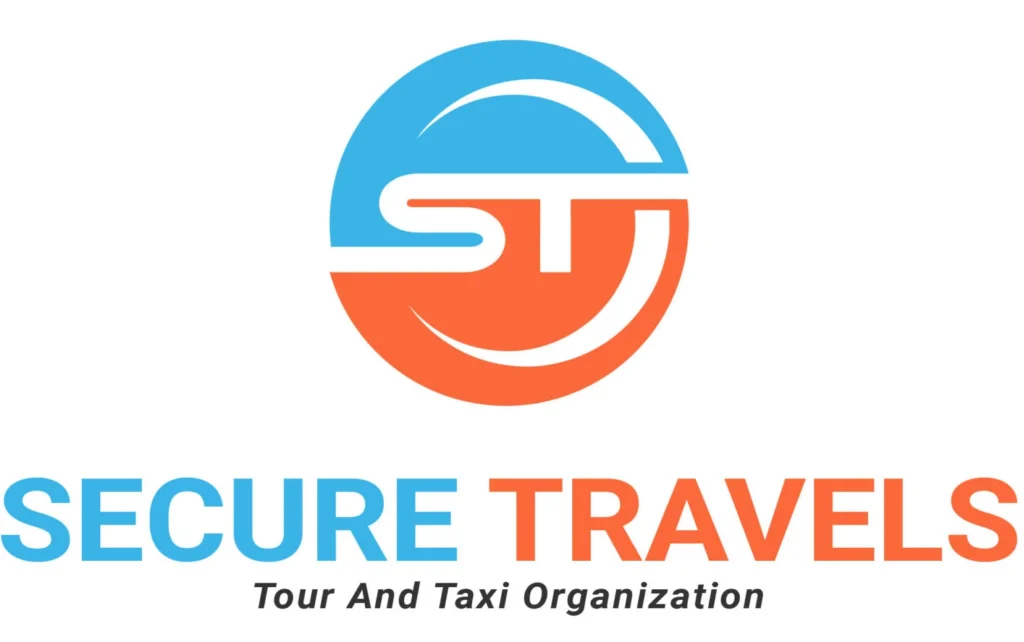Trekking Gears
The Complete Guide to Packing for a Himalayan Trek
What You Need for a Comfortable and Safe Himalayan Trek: A Guide to Trekking Equipment


Trekking through the Himalayas is an ideal experience. However, packing for a typical trip is not the same as this.
The terrain is difficult, the weather is unpredictable, and you can’t just dash to a store if you forget something in the mountains. Because of this, choosing the proper trekking equipment is more important for safety than comfort.
This guide will help you decide what equipment to bring if you’re unsure.
The Significance of Trekking Equipment
Ordinary travel attire is not sufficient.
Wet trails will cause sports shoes to lose their grip.
Jeans never dry out.
You won’t be protected from wind or snow by a hoodie.
And going on a hike with a school bag? By Mistake
Trekking gear is made for the outdoors. It keeps you warm, dry, balanced, and protected—especially above 10,000 ft, where weather and terrain get serious.
✅ List of Basic Trekking Gear (With Simple Explanation)
1. Backpack (50–60 Liters)
Should have padded shoulder straps, hip belts, and chest strap.
Must sit comfortably on your back for long hours.
👉 Explore backpacks here: Backpacks on Decathlon
2. Trekking Shoes
High ankle support
Strong grip (for snow, loose rocks)
Water-resistant
👉 Browse shoes here: Trekking Shoes on Decathlon
3. Warm Layers (Thermal + Fleece + Jacket)
You will need 3 layers to stay warm:
Base Layer: Thermal top and bottom (worn under everything)
Mid Layer: Fleece jacket or sweatshirt
Outer Layer: Windproof, waterproof padded jacket
👉 Check warm jackets here: Trekking Jackets on Decathlon
4. Trekking Pants (2 Pairs Minimum)
Quick-dry fabric
Stretchable and light
Avoid jeans or cotton joggers
👉 Buy pants here: Trekking Pants
5. Woolen Cap, Gloves, Neck Warmer, Sunglasses
Woolen Cap: Keeps head and ears warm
Gloves: Carry a warm pair (and a waterproof outer layer if it’s snowing)
Neck Warmer: Acts like a scarf
Sunglasses: Important on snow treks (UV protection)
👉 Explore accessories: Trekking Accessories
6. Rain Gear (Raincoat or Poncho)
Lightweight
Covers you and your backpack
Must be easy to wear quickly when it starts raining suddenly
7. Headlamp (Not Torch)
Keeps hands free during night treks or in tents
Carry extra batteries
8. Water Bottle (1L Min) or Hydration Pack
Avoid single-use plastic bottles
Insulated bottle helps during cold weather
💊 Other Essentials
Small First Aid Kit (bandages, ORS, personal medicine)
Toiletries: toothbrush, paste, toilet paper, hand sanitizer
Sunscreen (SPF 30+), lip balm (with SPF)
Zip pouches for keeping electronics and clothes dry
Trekking poles (optional but great for support)
🔁 Should You Buy or Rent?
If you’re trekking once a year or less, rent gear like shoes, jackets, and backpacks from local stores or your trek operator.
For multiple treks, buying makes more sense.
You can find affordable and good-quality options at:
📌 Final Words – Carry Light, Carry Smart
Pack only what’s essential
Avoid bulky or cotton clothes
Try wearing your packed gear once before your trek
Check your trek’s altitude and season, and match your layers accordingly
Trekking is less about “looking outdoorsy” and more about feeling ready.
The mountains don’t care about your brand names. But they do test your gear every single day.
Need a personalized checklist?
Tell me your trek name and season, and I’ll help you build a gear list that fits your exact plan.
Let’s make your trek safe, light, and unforgettable.
